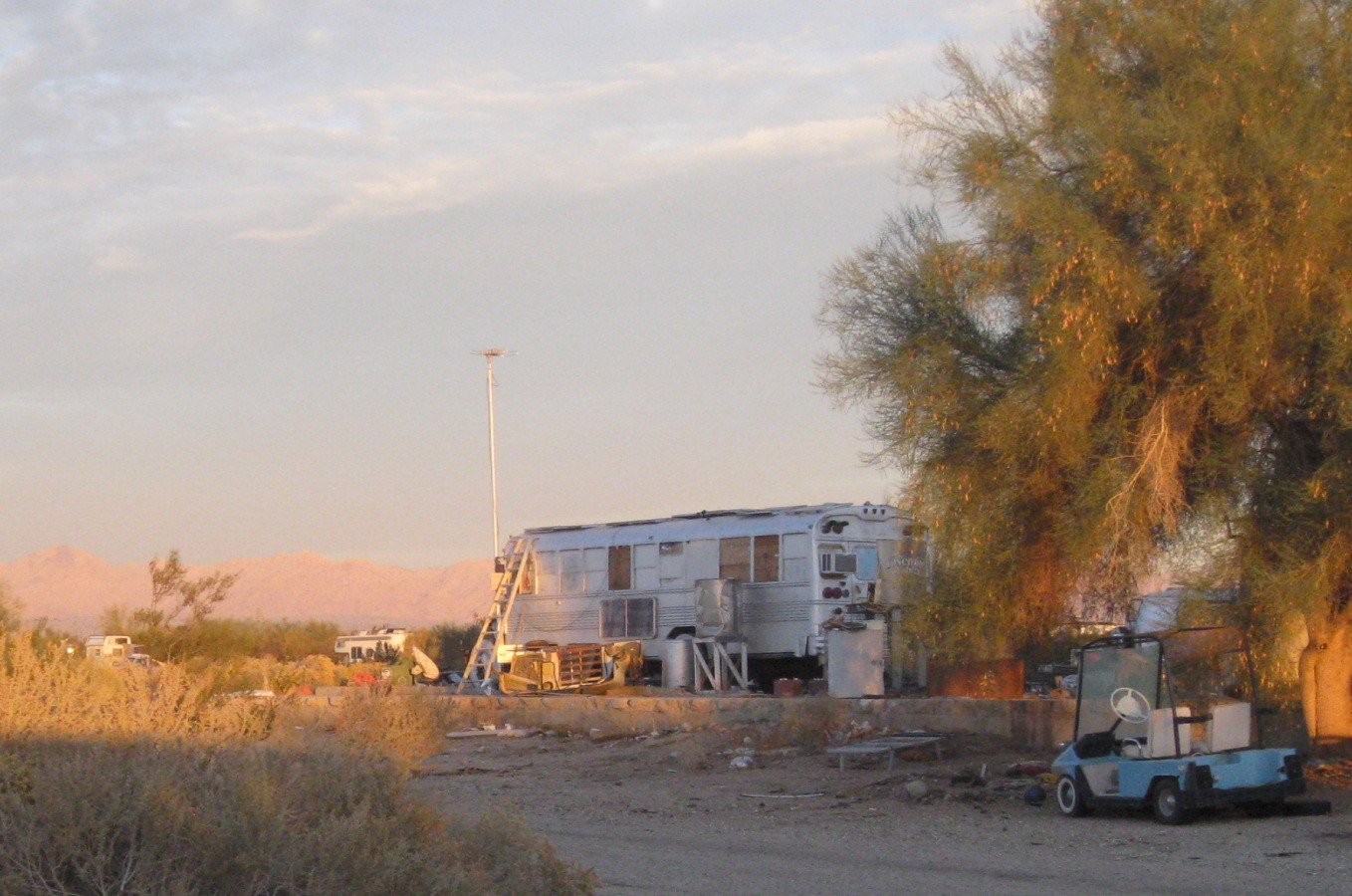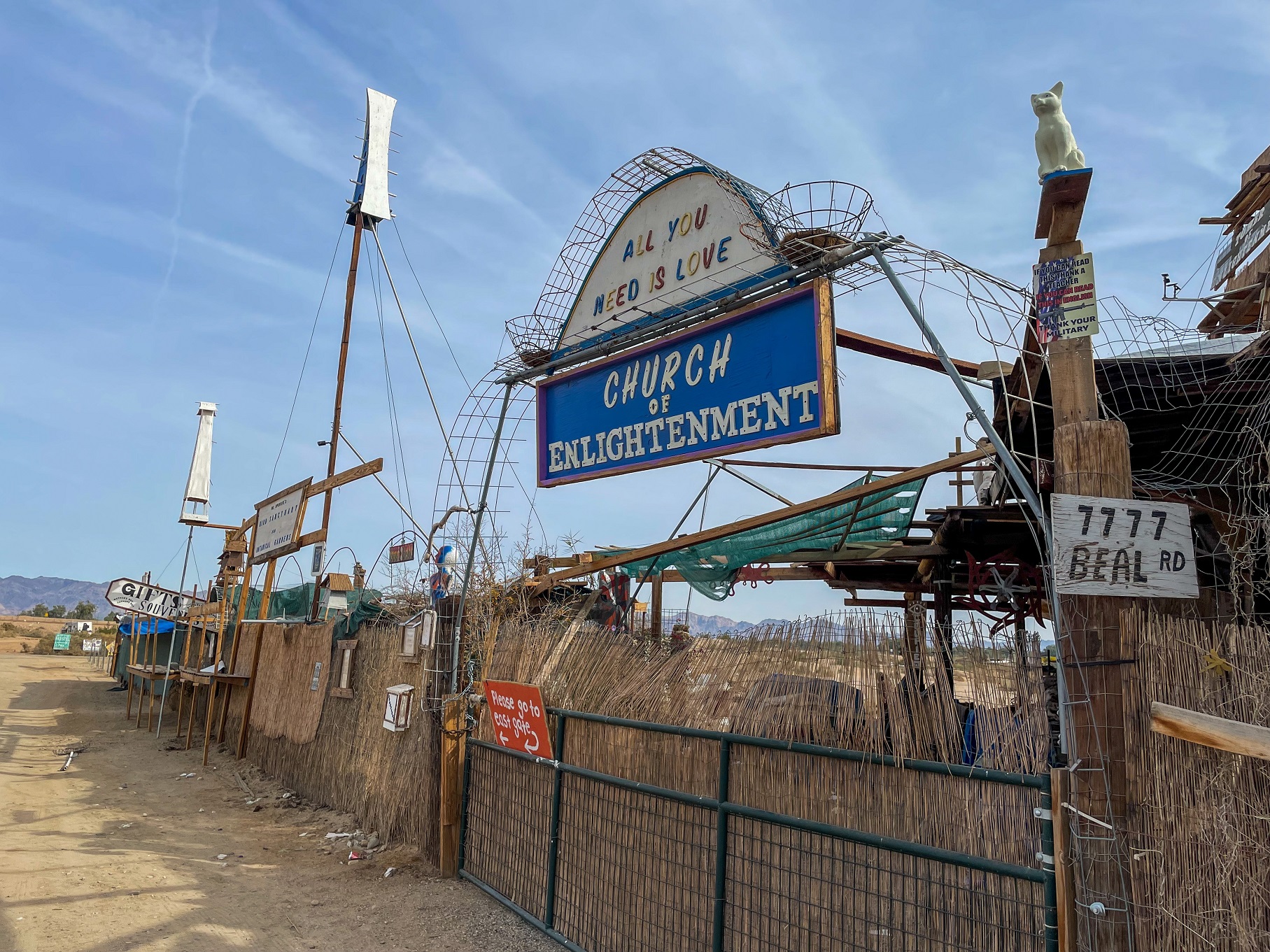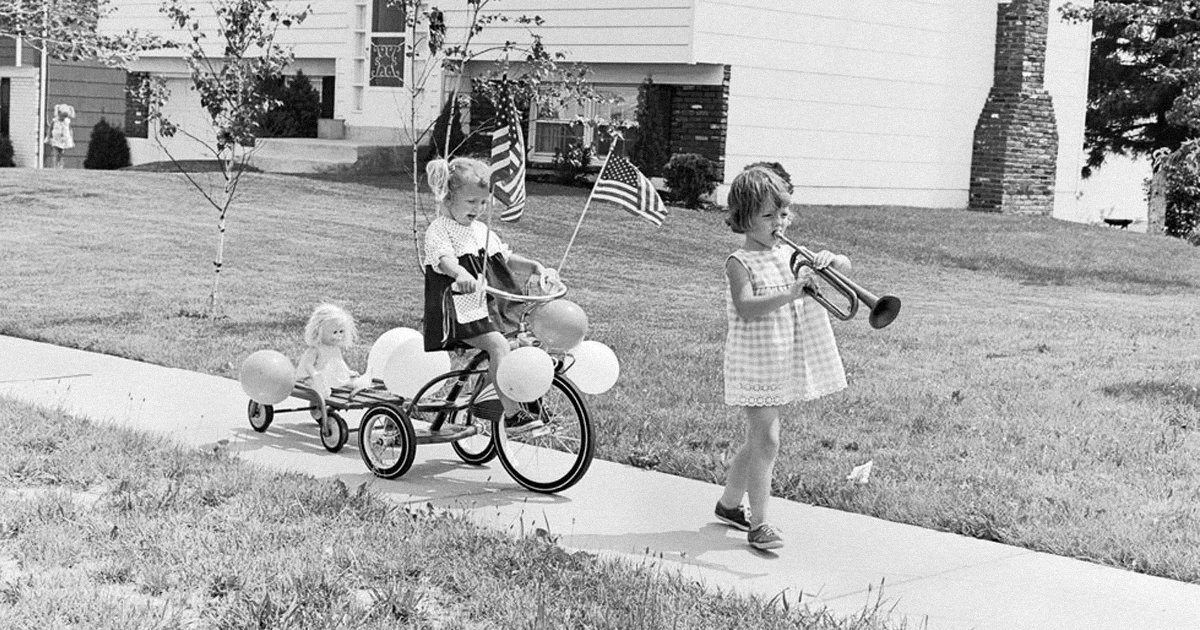Slab City, California
Hidden in Southern California’s desert is a small squatter’s paradise affectionately known as “The Last Free Place in America”.

An Off-Grid Community
This off-grid community is home to a handful of residents looking to get as far away from society as possible.
Location
Slab City is the official name of the community, but it is commonly known as “The Slabs”. It’s located in the Salton Trough area of the Sonoran Desert, in Imperial County, California.
Population
The population ranges between 150 to 4,000 people, depending on the season, and the diverse makeup of personalities is intriguing.
Resident Characteristics
Not all residents of Slab City are there permanently. In fact, many of them are snowbirds, campers, and temporary squatters.
Long term residents generally include artists, eccentrics, outcasts, and anarchists.
Residents: Why They Choose Slab City
Thousands of campers and RV owners—mostly retired—use the site during the winter months.
The “Slabbers” or “Year-Rounders” make a living from government programs and have made their way to Slab City due do poverty or job loss.
History
Slab City was once the artillery training range for a military run training camp.
Back in 1942, the camp had fully functioning buildings, water, roads, and sewage. By 1949 the operations were greatly reduced, and by 1956 it was permanently shut down and the buildings were dismantled.
History: First Residents
The first residents of Slab City were two veterans who had worked at the military base previously. They were later followed by a few drifters, and then eventually attracted campers looking for a free spot to park for the night.
Eventually, people started using the rubble to rebuild, and some chose to stay for good.
Resident Nicknames
Permanent residents refer to themselves as “Slabbies”, and they refer to visitors and tourists as “Normies”.
Residents: Population Surge
Slab City's popularity surged after an article was printed in Trailer Life and RV Magazine around 1984.
Reports claim that there were no more than 600 people around 1983, and then by 1988 there were about 2000 trailers parked in Slab City.
Residents: Lifestyle
There are also a number of people in Slab City who have purposely chosen the off-grid lifestyle.
Many of the permanent residents specifically chose this lifestyle in an attempt to avoid societal norms and government control.
Residents: Segregation
There is a bit of segregation between older residents who exchange goods and services and live a community-led off-grid lifestyle, and younger residents who seem ill-equipped for a self-sufficient lifestyle.
The younger ones generally turn to petty theft and substance use.
Cost of Living
How much does it cost to rent a space in Slab City? Nothing. It is completely free to live there. There are no taxes or fees. Residents simply find an open spot of land and set up camp.
Living Expectations
Residents are responsible for their own livelihoods. They come with what they have and they sustain a living however they choose.
Shelters
Some residents arrive via hitchhiking and live temporarily in tents while slowly building their shelter out of unused materials and donations.
Some residents arrive in fully equipped RVs and everything they plan to need to live purposely off-grid.
 Carol M. Highsmith, Wikimedia Commons
Carol M. Highsmith, Wikimedia Commons
Utilities
There is no electricity, plumbing, or running water in Slab City.
Residents travel for clean water, and rely on other sources of power, like generators and solar panels. Most residents make do with limited resources, and prefer the off-grid lifestyle.
Bathing
Many people from Slab City bathe in local hot springs, but they have to be careful not to get caught for “swimming unclothed”.
There is also a “cold shower”, which is a hole in the ground that collects runoff water from the hot spring.
Drinking Water
Residents travel to nearby cities to get potable water. Some boil water collected from a hot spring nearby.
Some residents with trucks will do large shops and bring the necessities back to Slab City to sell to other residents who cannot travel as easily.
Growing Food
Considering Slab City is in the desert, the soil is not exactly great for gardening, and the surroundings are not equipped for farming.
Some residents may grow small amounts of crops in buckets and pots, if they access to the resources needed to sustain them.
Grocery Shops
Some residents have set up a small shop within Slab City that sells basic groceries to local residents. They use a vehicle to travel to a nearby town called Niland to stock up.
Other residents travel to other towns themselves, if they have the means to do so.
Community Help
A lot of the residents of Slab City today are well below the poverty line. Thankfully, Slab City is very community-based and they take care of each other.
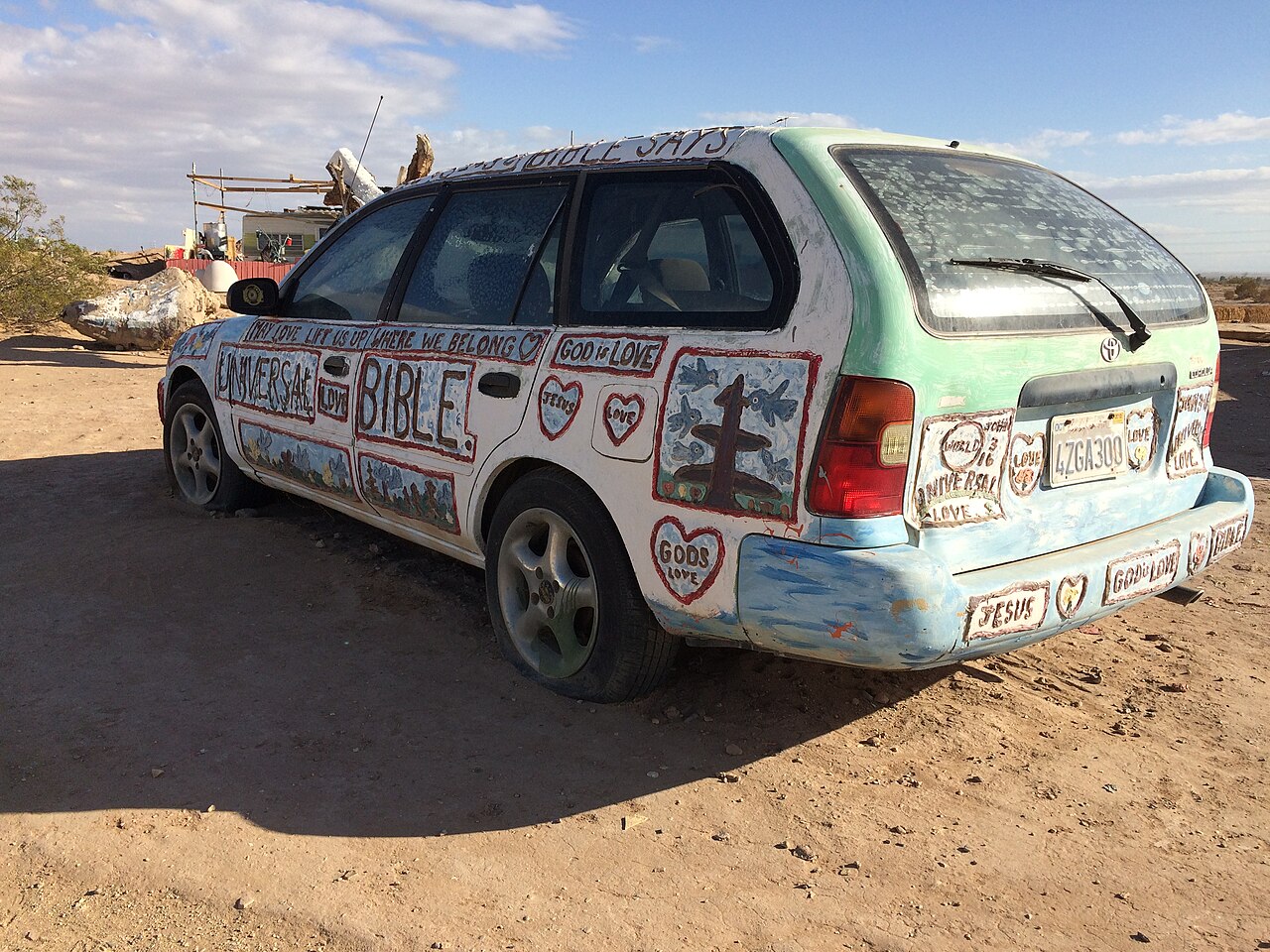 Aaron, CC BY-SA 2.0, Wikimedia Commons
Aaron, CC BY-SA 2.0, Wikimedia Commons
Free Meals
There are residents who have set up makeshift restaurants where they cook and serve free meals to other locals. There is actually a Facebook page where they announce when they have a free meal, and they walk around to share the news.
Other Amenities
Amenities in Slab City include The Range (entertainment), a makeshift library, RV rental units, an internet cafe, and small establishments which sell food; though most shopping is done in Niland.
One resident set up a weekly self-help group for women in the community.
The Range
The range is an open-air nightclub complete with a stage, lights, amplifiers, and speakers. There is a variety of old, battered chairs and couches for seating.
Every Saturday night, locals and visitors go there for a talent show that features some of the permanent residents of Slab City—but it is open to anyone who wants to perform.
 www.Pixel.la Free Stock Photos, Wikimedia Commons
www.Pixel.la Free Stock Photos, Wikimedia Commons
The Range: Prom Night
The Range is run by a long-term, permanent resident named William Ammon, known as “Builder Bill”, and his wife, Robin.
Robin collects used prom dresses for people to wear. They are usually used when the community holds a “prom” style celebration for the many residents who have never been able to actually attend one.
The Library
Slab City has a free lending library—known as Lizard Tree Library.
As with all buildings in Slab City, it is a makeshift structure using recycled materials. It has no door, as it never “closes”. The floor is carpet over the lumpy dirt ground.
The Library: History
The library was started in 1999 by resident Peggy Sadlik, and it was only two small rooms. It has since been expanded and now has several walls of shelves with books of all genres collected over the years by local residents, and donated by visitors.
The Internet Café
The internet café is made up of a few old trailers and recycled materials strewn together to make up a semi-enclosed building.
It is powered with generators, and includes a wifi connection.
The Internet Café: History
It is said that it was a resident with a generator and a wifi connection who decided to share their technology.
Today, it has grown, and is funded through donations from locals, visitors, and outside supporters of the community.
 Leif K-Brooks, CC BY-SA 2.0, Wikimedia Commons
Leif K-Brooks, CC BY-SA 2.0, Wikimedia Commons
The Skatepark
Slab City has a skatepark that was built by locals inside the remains of the old military swimming pool. Poles and jumps have been added over the years from various recycled materials.
Community
Slab City is divided into a handful of neighborhoods with different characteristics. They’re basically small camps of people with their own particular rules and culture.
Community Division
As of 2020, the community is largely divided into two sections: East Jesus and Slab City. East Jesus is essentially a wide-open art museum, and it is the highlight of the community for tourists.
Slab City is basically the rest of the community.
 tuchodi, CC BY 2.0, Wikimedia Commons
tuchodi, CC BY 2.0, Wikimedia Commons
East Jesus
East Jesus is located within Slab City boundaries. It is an “experimental, sustainable and habitable art installation”.
It was started in 2007, and is actually quite a tourist attraction.
East Jesus: History
East Jesus was started by Charles Russell, an American man who was done chasing the “American Dream” and found himself in Slab City.
The City was overflowing in trash—so he got an idea.
 Carol M. Highsmith, Wikimedia Commons
Carol M. Highsmith, Wikimedia Commons
East Jesus: Creation
The trash wasn’t exactly “trash”, it was more of a scrap yard—and Russell had an artistic mind.
He started using the leftover materials to create artistic structures, and it wasn’t long until others followed suit.
 RoyceC, CC BY-SA 4.0, Wikimedia Commons
RoyceC, CC BY-SA 4.0, Wikimedia Commons
East Jesus: Today
Today, the community continues to create incredible art in East Jesus, made from materials that have been reused, recycled, or repurposed.
People travel to Slab City just to see the art in East Jesus.
 Carol M. Highsmith, Wikimedia Commons
Carol M. Highsmith, Wikimedia Commons
Salvation Mountain
Another art installation within Slab City boundaries is Salvation Mountain, created by an early settler who lived there for over 30 years.
The mountain is 50 feet tall, and stands as a centerpiece to the community.
 Joe Decruyenaere, CC BY-SA 2.0, Wikimedia Commons
Joe Decruyenaere, CC BY-SA 2.0, Wikimedia Commons
Salvation Mountain: Significance
Leonard Knight, the creator of Salvation Mountain had spent almost 30 years building the colorful mountain out of recycled materials and donated paint. He worked on the mountain all day, every day.
He slept at the base of the mountain in the back of a pick-up truck, with no electricity or running water, for most of his life.
 Carol M. Highsmith, Wikimedia Commons
Carol M. Highsmith, Wikimedia Commons
Government: Ownership
Slab City is owned by the state of California. Since all residents are “squatters”, the state can choose to do whatever they want with the land.
So far, they’ve left them alone.
Government: Patrol
On paper, it is reported that Slab City is regularly patrolled by the Imperial County Sheriff’s Office, as well as Border Patrol…but residents have reported saying “we live however we want and no one checks on us”.
It is said, however, that authorities will respond when called.
 Galenasphaug, CC BY-SA 3.0, Wikimedia Commons
Galenasphaug, CC BY-SA 3.0, Wikimedia Commons
Crime
Most of the unlawful activity that happens in Slab City is substance related—specifically crystal. Sometimes authorities are called for property disputes or burglary.
 Joe Decruyenaere, CC BY-SA 2.0, Wikimedia Commons
Joe Decruyenaere, CC BY-SA 2.0, Wikimedia Commons
A Fugitive’s Hide Out
In December 2019, four fugitives hiding in Slab City were apprehended. The federal government had been searching for two days for them as part of Operation Valley Grinch.
Slab City would is often deemed a “perfect hide-out” for people needing to disappear.
Slab City Laws
Slab City residents claim they do follow state laws, for the most part, but that they also have their own set of unofficial laws.
For example, they do not appreciate when other locals loot from visitors. They have a sense of respect for those who visit, and temporary campers.
 Nagel Photography, Shutterstock
Nagel Photography, Shutterstock
Slab City Laws: Personal Protection
The residents also remain very protective over their belongings. They love the share, but if you don’t ask first, you’re in trouble.
It is said to be a community-wide rule that you simply don’t touch other people’s belongings.
Income
The most common source of income among the permanent residents is Supplementary Security Income (SSI). In 1995, almost every resident of Slab City collected disability benefits, social security or unemployment.
In 2020, Ranker.com reported that Slab City's income mainly comes from tourists and donations.
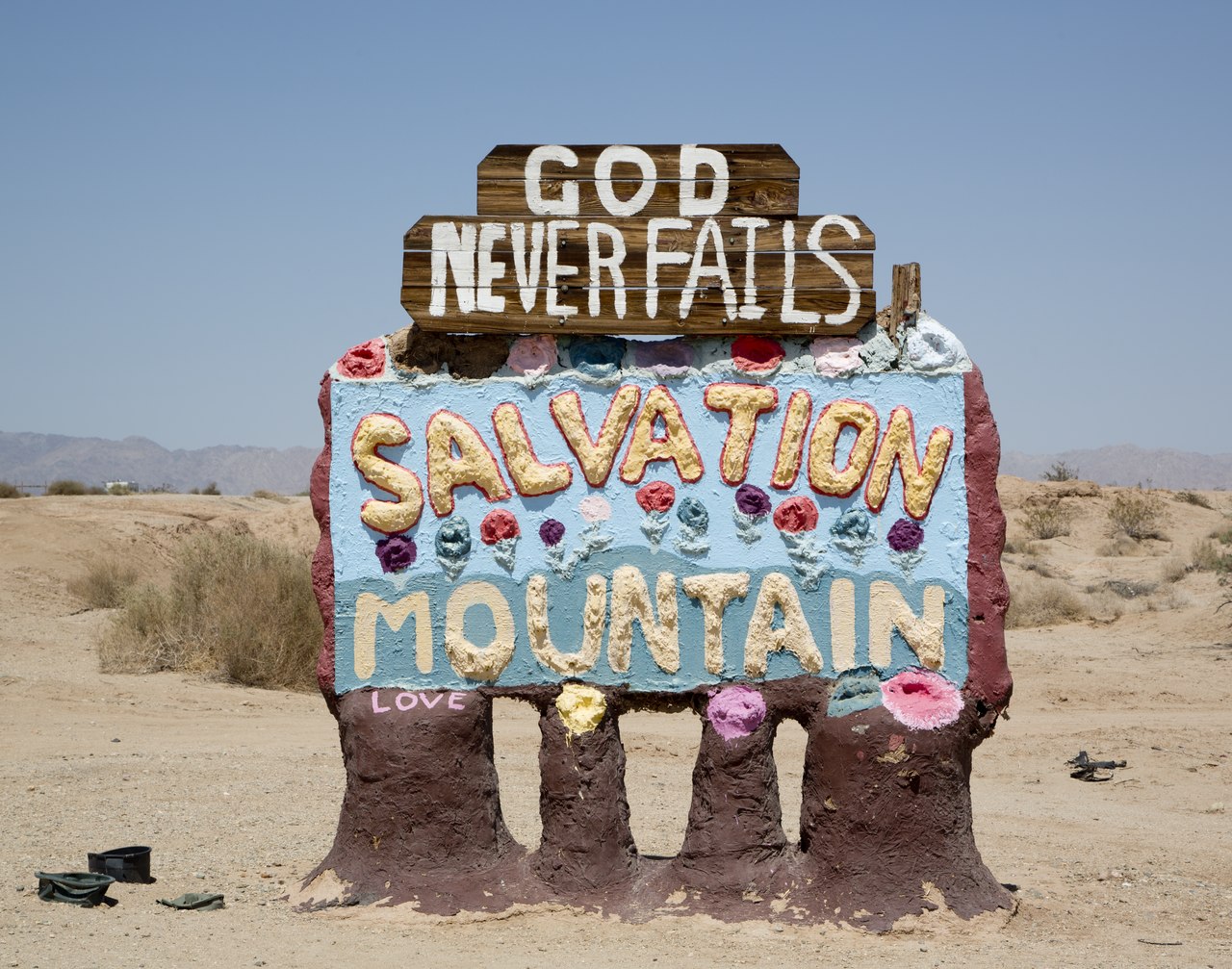 Carol M. Highsmith, Wikimedia Commons
Carol M. Highsmith, Wikimedia Commons
Income: Hustling
To supplement their security checks, many permanent residents sell savaged goods to visitors.
Tourists will purchase repurposed materials from locals as souvenirs from the “The Last Free Place in America”.
The Pandemic: Tourism
During the 2020 pandemic, most tourist destinations were closed. This impacted Slab City as they relied on visitor donations for food and water.
The residents were divided on whether or not to follow government guidelines.
The Pandemic: Medical Care
It was a complicated situation as most residents lacked health insurance, and the community had no medical infrastructure. Many residents were elderly, and relied on the community for survival in general.
The community also lacks running water, sewage, and garbage disposal, adding to the challenge.
The Pandemic: Confirmed Cases
Actual numbers are not available for Slab City as the residents live off-grid and do not provide this information to anyone. Very little information was reported at all during this time.
It is also said that many residents did not take part in testing. The local area, Imperial County, confirmed 55 cases out of 417 tests.
The Future of Slab City
In May of 2020, rumors circulated that the state was hoping to sell the land, possibly to energy companies.
Many residents now worry that a sale of the land would leave them without a place to live. Slab City has become a last resort for so many.











